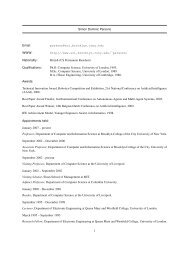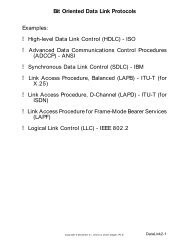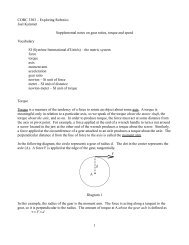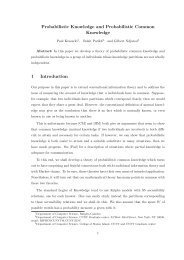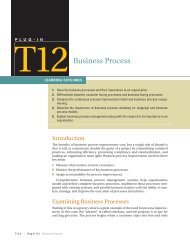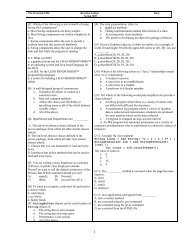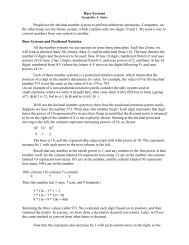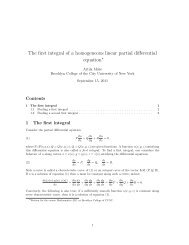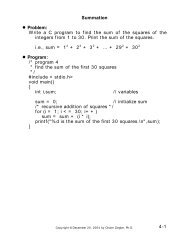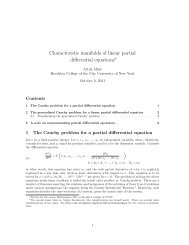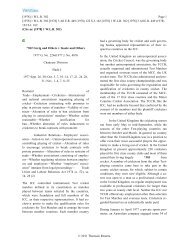Chapter 5: Architecture - Computer and Information Science - CUNY
Chapter 5: Architecture - Computer and Information Science - CUNY
Chapter 5: Architecture - Computer and Information Science - CUNY
You also want an ePaper? Increase the reach of your titles
YUMPU automatically turns print PDFs into web optimized ePapers that Google loves.
5.4. QUANTUM GATES 35<br />
Multiplying this state with the Fredkin gate gives us<br />
⎡ ⎤ ⎡ ⎤<br />
0 0<br />
000 001 010 011 100 101 110 111<br />
⎡<br />
⎤<br />
000 1 0 0 0 0 0 0 0<br />
0<br />
0<br />
001 0 1 0 0 0 0 0 0<br />
1<br />
√ 1<br />
010 0 0 1 0 0 0 0 0<br />
2<br />
√ 2<br />
011 0 0 0 1 0 0 0 0<br />
0<br />
0<br />
100 0 0 0 0 1 0 0 0<br />
=<br />
. (5.110)<br />
0<br />
0<br />
101 0 0 0 0 0 0 1 0<br />
⎢<br />
⎥<br />
110 ⎣ 0 0 0 0 0 1 0 0 ⎦<br />
0<br />
1<br />
√ 2<br />
111 0 0 0 0 0 0 0 1<br />
1<br />
⎢√ ⎥ ⎢<br />
⎣ 2<br />
0 ⎥<br />
⎦ ⎣ ⎦<br />
0 0<br />
The resulting state is<br />
|0, 1, 0〉 + |1, 0, 1〉<br />
√<br />
2<br />
. (5.111)<br />
So, whereas on a classical bit x, the Fredkin gate performs the fanout operation<br />
as<br />
(x, 1, 0) ↦→ (x, ¬x, x) (5.112)<br />
on a superposition of states, the Fredkin gate performs the following very strange<br />
operation ( )<br />
|0〉 + |1〉<br />
|0, 1, 0〉 + |1, 0, 1〉<br />
√ , 1, 0 ↦→<br />
√ . (5.113)<br />
2 2<br />
This strange operation is not a fanout operation. And so the no-cloning theorem<br />
safely st<strong>and</strong>s.<br />
Exercise 5.4.12 Do a similar analysis for the Toffoli gate. Show that the way<br />
we set the Toffoli gate to perform the fanout operation does not clone a superposition<br />
of states.<br />
. . . . . . . . . . . . . . . . . . . . . . . . . . . . . . . . . . . . . . . . . . . . . . . . . . . . . . . . . . . . . . . . . . . . . . . . . . . . . .<br />
Reader’s Tip. The no-cloning theorem will be of major importance in<br />
chapters 9 <strong>and</strong> 10. □<br />
. . . . . . . . . . . . . . . . . . . . . . . . . . . . . . . . . . . . . . . . . . . . . . . . . . . . . . . . . . . . . . . . . . . . . . . . . . . . . .<br />
. . . . . . . . . . . . . . . . . . . . . . . . . . . . . . . . . . . . . . . . . . . . . . . . . . . . . . . . . . . . . . . . . . . . . . . . . . . . . .<br />
References:<br />
The basics of the qubits <strong>and</strong> quantum gates can be found in any textbook<br />
on quantum computing.<br />
The history of reverable computation can be found in [1]. This [3] readable<br />
article by one of the forefathers of reversible computation is strongly recommended.<br />
The no-cloning theorem was first proved in [2] <strong>and</strong> [4].



